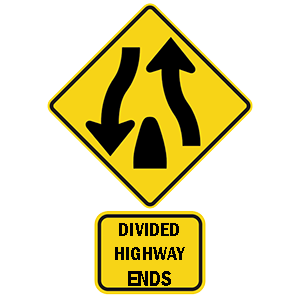2025 South Dakota Permit Test 17
The following questions are from real DMV written tests. These are some of the actual permit questions you will face in South Dakota. Each permit practice test question has three answer choices. Select one answer for each question and select "grade this section." You can find this button at the bottom of the drivers license quiz. For a complete list of questions and answers for South Dakota please visit https://cheat-sheets.dmv-written-test.com/en/south-dakota/car.
Number of Tests
Number of Question
Passing Score
9. On a multilane road, a dashed yellow line next to a solid yellow line means:
Explanation
Where there are both solid and dashed yellow lines between lanes of traffic, only traffic directly next to the dashed line may cross the centerline to pass. Drivers next to the solid line may not pass.
10. When may you legally drive around or under a railroad crossing gate?
Explanation
Do not go around or under any lowered gate at a railroad crossing. Once the gate is raised, do not proceed across the tracks until you can see clearly in both directions and are sure there are no trains coming.
11. Which of the following statements is true?
Explanation
Driving too slowly can be dangerous because it may cause drivers behind you to become frustrated and make dangerous moves to pass you. It is safest to drive with the flow of traffic, within the legal speed limit.
12. When passing a row of parked vehicles, you should:
Explanation
Keep a space between your vehicle and parked vehicles. A person may step out of a parked vehicle or out from between the parked vehicles without looking. A driver may begin moving their vehicle before realizing you are there.
13. This sign means:

Explanation
Warning signs are usually yellow with black markings. This sign warns that the divided highway ends ahead. Prepare to change lanes or shift lane position.
14. When a bicyclist is making a left turn:
Explanation
You should expect to see bicyclists driving with traffic on the road. You should not be surprised to see a bicyclist using the left lane when turning.
15. If you see a pedestrian using a guide dog or carrying a white cane:
Explanation
Blind or partially blind pedestrians may carry a white cane or use the assistance of a guide dog. You must yield the right-of-way to a pedestrian with a guide dog or a white cane.
16. A U-turn is not permitted:
Explanation
